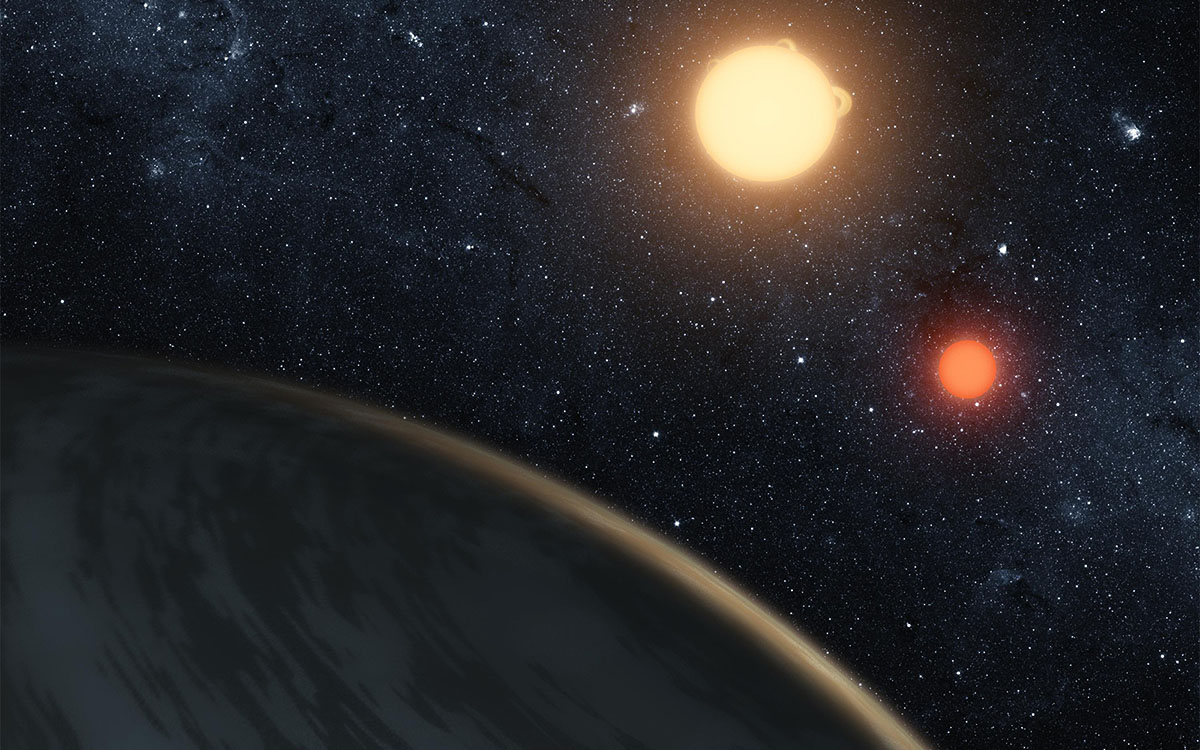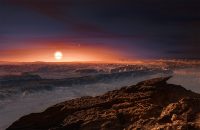The gas giant Kepler-16b, nicknamed ‘Tatooine,’ orbits a pair of stars. One star is a small red dwarf star, the other is a larger K dwarf. (NASA/JPL-Caltech)
Home The gas giant Kepler-16b, nicknamed ‘Tatooine,’ orbits a pair of stars. One star is a small red dwarf star, the other is a larger K dwarf. (NASA/JPL-Caltech) The gas giant Kepler-16b, nicknamed 'Tatooine,' orbits a pair of stars. One star is a small red dwarf star, the other is a larger K dwarf. (NASA/JPL-Caltech)




